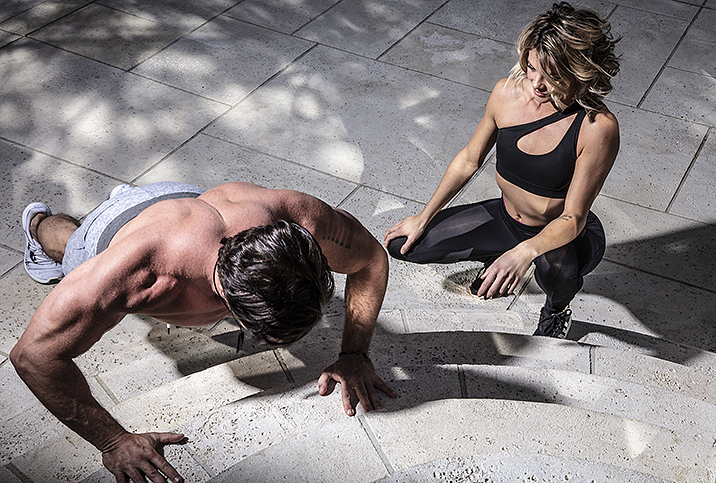You Can Thrive with Prostatitis

Prostatitis is a common condition in men. Typically caused by a bacterial infection, prostatitis causes inflammation, swelling and tenderness in the prostate, and it can affect a man’s ability to urinate and enjoy sex. In addition, it can dramatically reduce range of motion in the pelvic region.
By supplementing a doctor’s treatment with certain habits and lifestyle choices, you may be able to take steps to alleviate the pain and discomfort associated with prostatitis.
Prostatitis is common
According to the Prostate Cancer Foundation, half of all men will contract prostatitis in their lifetime, many more than once. More than 2 million American men will visit the doctor each year and receive a diagnosis of prostatitis. In most cases, prostatitis is triggered by a bacterial infection of the prostate, but it can also be induced by general inflammation in the pelvic region. Some sexually transmitted infections can induce prostatitis, too.
Prostatitis can cause debilitating pelvic pain, urinary issues and painful ejaculation during sex. However, the condition can often clear up within a matter of weeks or months after treatment with antibiotics. Yet, the debate continues about its potential to be wholly cured. Some men will see their initial prostatitis diagnosis transition into a permanent condition with marked flare-ups, or they may be diagnosed and treated for chronic pelvic pain syndrome.
Along with a doctor’s recommendation and treatment, certain foods, pelvic stretches and safe sex practices can assist in speeding up the recovery process—and help manage the symptoms if the issue transitions into a chronic condition.
Dietary changes can help
When it comes to what you eat, Harvard Medical School reports that five servings of vegetables and fruits daily could help boost your prostate’s health. The school also recommends cutting down on processed sugary products and red meat, both of which can trigger inflammatory responses within the body.
When it comes to choosing your veggies, consider adding more tomatoes to your diet, because research suggests that lycopene (an antioxidant found primarily in tomatoes) may have powerful healing effects on the prostate.
Stretching
Let’s face it: Yoga isn’t everyone’s cup of tea. But if you find yourself dealing with recurring pain from prostatitis, try these three yoga poses: bound angle, easy and fire log. An obvious tip, maybe, but you may want to warm up your body a little before you attempt these positions:
Bound angle pose
For this pose, also called the butterfly pose, sit comfortably on the floor and bring the soles of your feet together, clasping your ankles firmly in each hand. Slowly start to lay your knees out to either side; you should feel stretching in the pelvic/groin area. Make sure to breathe regularly during the process. This position is especially helpful for alleviating prostatitis-driven nerve pain that may branch out into the hips.
Easy pose (criss-cross)
Most people remember sitting criss-cross applesauce (seated cross-legged) from their days in kindergarten. Well, it’s also a yoga pose and it translates from Sanskrit as “easy pose.” Many Westerners have difficulty holding this position for extended periods of time. With cyclical breathing, and patience, your hip flexors and groin will find relief from inflammation and tenseness.
Fire log pose
Take note that this position is recommended only if you are able to achieve it with minimal pain. You may be wise to attempt it only after successfully achieving the previous two positions as a warmup. For the fire log pose, which will look somewhat similar to the easy pose, place your nondominant leg on the ground as if you were to sit in the easy pose. Instead of crossing your legs, place your dominant leg over the top of the other, and tuck your toes into the crook where your knee and calf meet. When you can no longer comfortably hold this position, switch legs and repeat the process. This pose is a slightly more intense way to alleviate lower back pain and stiffness from prostatitis or chronic pelvic pain syndrome.
As a final note on yoga positions: If you do find that these positions decrease your pain, you may want to sign up with a full-time yoga instructor whose experience with other poses and breathing exercises could be even more beneficial.
Safer sex practices
Having sex while suffering with prostatitis is completely possible, though men with the condition may experience painful ejaculation during their climax.
If you’ve been diagnosed, and are healthy enough for sexual intercourse, then you should talk with your partner about what feels good and what doesn’t. The symptoms of prostatitis are different for everyone, and to properly enjoy yourself during sex you’ll need to figure out what works best for you. Also, understanding your body’s boundaries can help you pay attention to what triggers your symptoms.
As a common disease that affects men of all ages, prostatitis is something that may require significant lifestyle changes and medication from a doctor. Whether the disease becomes a temporary or chronic condition is variable, but following these steps to minimize the effects is a surefire way to help you thrive.

















